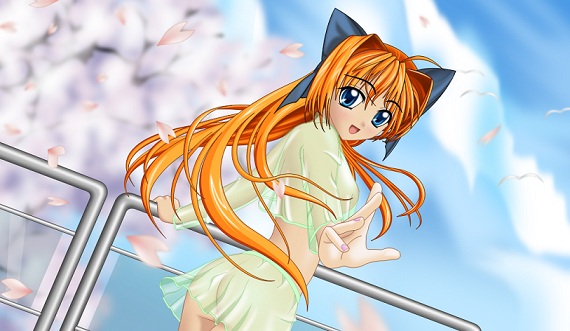Contents
How to Draw Wet Anime Hair Step by Step
Draw Wet Anime Hair – This tutorial shows you how to draw step-by-step instructions with pictures on wet anime hair and manga style. It also gives some examples of how wet hair is different from normal/dry hair.
Anime and manga scenes involving rain, bathing, and swimming are likely to show wet hair. The same may be true of action scenes involving water or even a character simply sweating profusely.
Although drawing wet hair is not much harder than drawing regular (dry) anime hair, there are a few rules you can follow to help you show that the hair you are drawing is wet.
Dry Anime Hair
Before painting wet hair, it is good to estimate what a dry version of the same hair will look like. You can see the “dry” version of the hair used in the tutorial above.
Although this tutorial uses only one hairstyle as an example, you can use the same method in drawing some of the most common anime hairstyles.
Details for Wet Hair
Normally wet hair will have less volume, and dry hair will stick closer to the head pulled down by their weight. It will also like to hang upside down and reach very low as it weighs. Please note that there are exceptions to this rule, such as hair-pulling or braided into a tight band, etc.
We will split the hair into three parts to help make the styling process more manageable and better track how hair turns when wet.
You can think of hair as the front, side, and back / top combination for a quick explanation.
Step 1 – Draw the Front of Hair
Before painting the hair, you should sketch the head and draw the hair that goes over it. You can clear the hidden parts of the head later.
Draw the front part of the hair hanging down the face rather than the usual bumps facing downwards to show heavy water. You can also bring the clumps closer to their base. Doing so will make the hair look as if the hair is sticking close to the forehead as wet hair can be.
As this hairstyle is simple, you can go ahead and style most of each person’s hair quickly. Although the drawing pattern shows a black hairline, you may still want to draw light lines that can easily be erased using pencil and paper.
Step 2 – Draw Sideburns
Above, you can also see what a wet version of sideburns might look like compared to a dry version. They will have a small volume, and instead of hugging, the face will hang almost straight down.
The comparison diagram shows the sideburns themselves to make the changes easier to see, but your drawing should look like the examples above.
Step 3 – Drawing Top Hair
In the upper part of the hair, the main transformation will be a small volume with low clumps hanging down rather than curling at the sides.
And if you are following this tutorial, you should have a drawing like the one above
Step 4 – Drawing Back Hair
As with this hairstyle, the back/bottom part of the hair follicles will have a very big change from dry to wet.
In a wet version, draw various lumps as “pressed” together. At the same time, draw them face down and hang down.
It would be best to have a very good finished hair drawing after completing the back section.
Step 5 – Cleaning the Drawing
In this short step, you can erase the covered parts of the hair and make any other minor changes that you may feel are needed.
As it has been recommended before to do the painting of the light hairline, first at this stage, you can walk on it with black lines.
Step 6 – Drawing Small Hair Details
To make the hair look more attractive, you can add a few splits/curls to some clumps. In this basic example, we will add only three. But if you want a more detailed drawing, you can add more in different areas.
Step 7 – Basic Shading
If you are going to blur the drawing using a pencil and paper, you may want to see step nine before proceeding.
Thanks to this basic shading, you can fill the hair with one solid shade of gray or color. Shade “back hair” a little darker.
Step 8 – Drawing Water Drops
To reaffirm the concept of wet hair, we can add small drops of water in several places on the hair clumps.
At this stage, pull only the water droplets that hang over the hair follicles or wrap down the sides.
Make water droplets thinner to the top and wider to the bottom of those on hair types. Draw drops down the sides in the same way to the bottom of the question mark.
You will notice that there are also a few drops painted on the real face and neck. If a character has water droplets on his hair, he may also have them in those areas.
Step 9 – Inner Water Drawing Plan (Final Step)
With this step, you can add the following set of water droplets drawn inside the main hairline. Usually, in anime and manga, this frame is painted in white as otherwise, it would be very difficult to see it in black hair.
This makes this water set slightly slower to add when doing pencil shading. One thing you can do is leave these areas white and shady around them. You can pull a few “inside drops” to make the process less tedious if you want to do that. Alternatively, you can use gouache paint to draw a drop on the pencil blur.
You can simply draw drops over any color or blur if you draw digitally.
In the case of these drops, you can draw most of them like the shape of a “U” that is slightly wider at the bottom. You can also combine several drops into waves such as waves. If you want to show off immersed hair, draw these wave patterns to make them bigger and make more of them.
Once you have finished drawing the “inner hair drops,” you are very good at everything you need to draw anime hair that looks wet.
Above, you can see the combined comparisons of dry and wet hair.
Conclusion
The steps for drawing wet anime and manga are similar to drawing normal (dry) hair in the same style. The main features of wet-looking hair are the small volume and the hair follicles pointing downwards. You can also add a few drops of water to keep your hair moist.

